A minor chord is a 3 note chord that is often described as sad. A minor chord is made by stacking a minor 3rd and a perfect 5th over a root note. These intervals are what gives minor guitar chords their distinctive quality.
To remain interesting, music needs flow, and minor chords allow the story told through music to progress by adding emotional turbulence.
In this article we discuss the importance of minor chords in music, how to build them on your guitar, and learn important minor chords used frequently in real songs. By the end you will feel confident playing minor guitar chords in your own music.

Understanding Minor Chords
To begin with the basics, a minor chord is a 3 note chord, although some notes may be doubled. Along with major triads, minor triads are the most commonly used chord quality in music.
Other qualities exist too, like diminished and augmented, but they have special roles that we won’t get into today. For now, let’s just focus on building minor triads.
A minor triad is built by stacking intervals of a minor 3rd and a perfect 5th over a root note. If this root note were A, a minor 3rd above that would be C and a perfect 5th above that would be E.
A-> C = m3
A -> E = P5
m3 + P5= minor triad
D-> F = m3
D -> A = P5
m3 + P5= minor triad
Minor chords are often described as sad, especially compared to the jovial sound of the major chord. Learning to hear the difference between a major chord and a minor chord is a great skill to have as a musician.
When we use minor chords along with major chords, we add depth to our music, taking listeners on a journey with a beginning, middle and end.
Common minor chords you might have heard of already are D minor, E minor, and A minor. All 3 of these minor chords are found in the key of C, which means they don’t require any accidentals to play them.
Constructing Minor Chords
Playing the intervals of a minor 3rd and a perfect 5th horizontally on one string can help us to visualize how minor chords are stacked. However, real minor chords are played vertically across multiple strings, as we cannot play more than one note per string on the guitar.
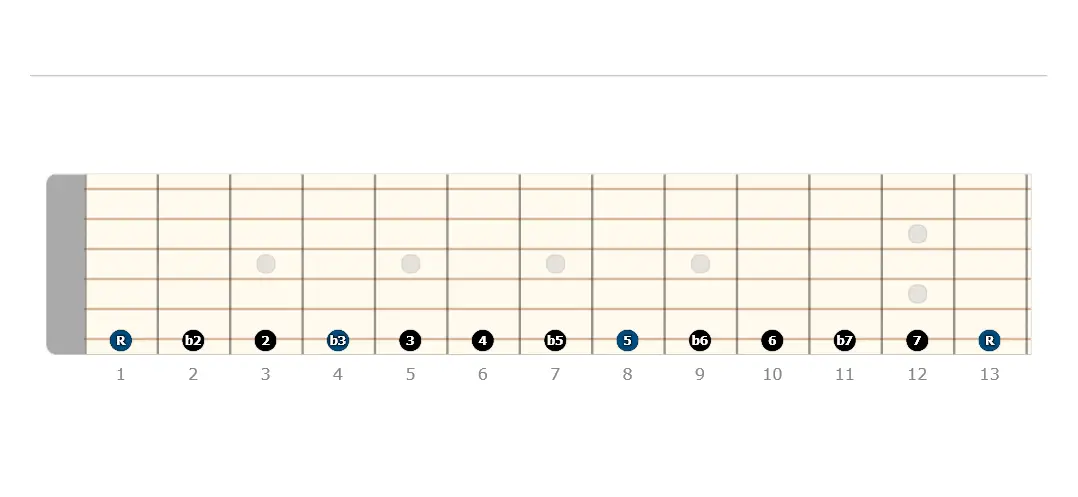
Minor Triad Shapes
When we apply the intervals of a minor 3rd and a perfect 5th across multiple strings, we get new shapes that help us to play a minor chord on any root note.
Root On 6
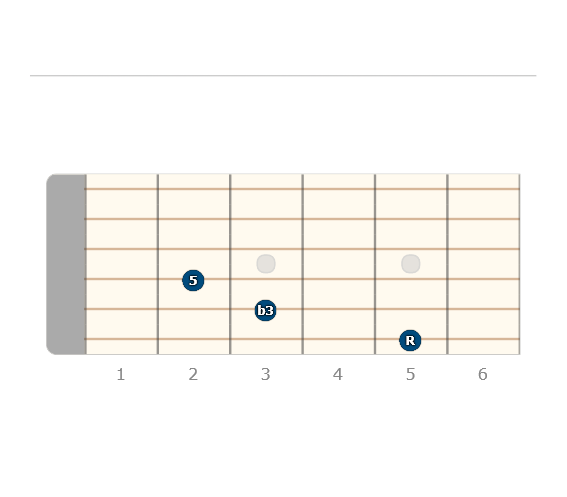
Root On 5
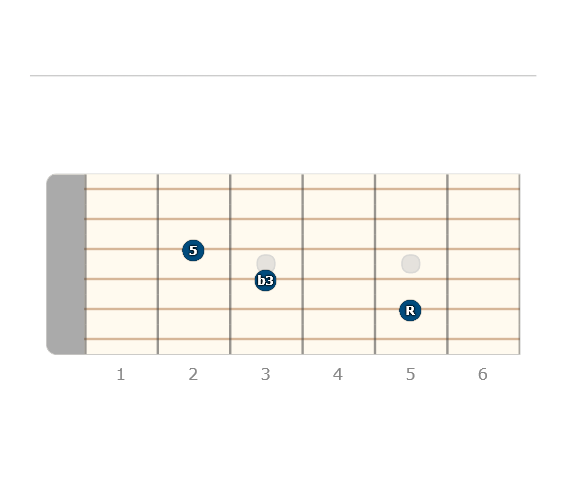
Root On 4
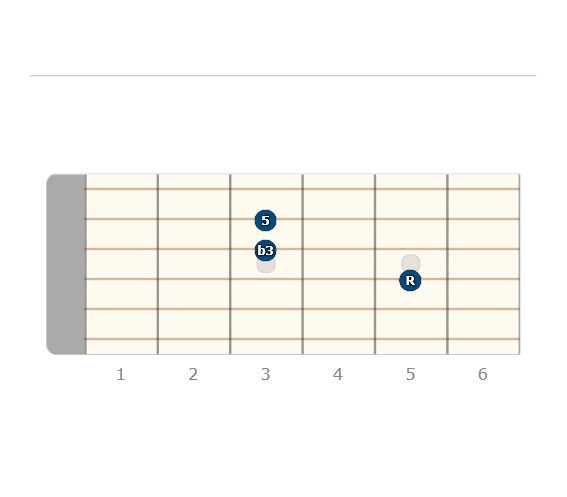
Root On 3
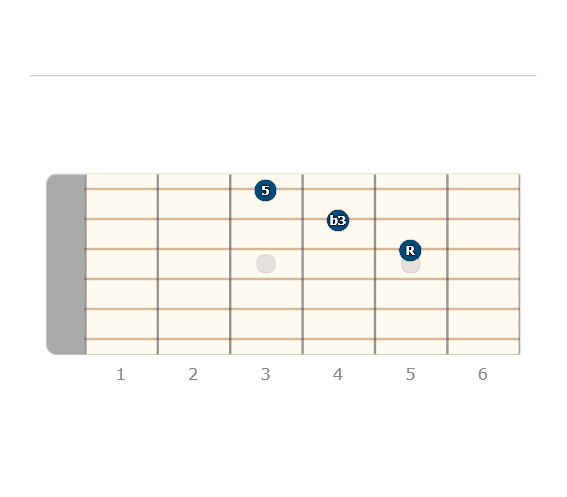
Variations and Extensions
Now That you have learned the basics of how to stack minor chords, and the minor triads shapes along multiple strings, we will introduce the concept of playing open minor chords, minor barre chords, as well as some minor inversion shapes.
Open Chords
Open Chords are chords played on the first 3 frets on the guitar. They utilize open strings to play them. These chords are very common amongst beginners and pros alike, and they are a great entrypoint for learning the guitar. Here are a few common open position minor chords:
D Minor
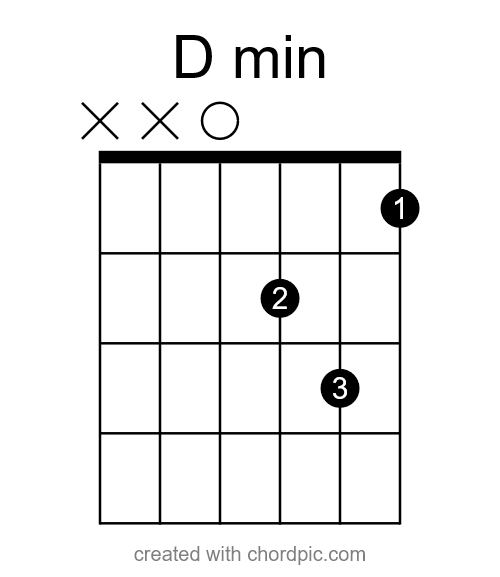
E Minor
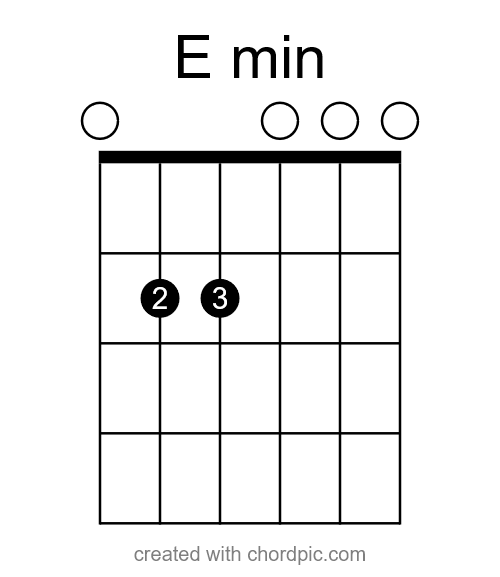
A Minor
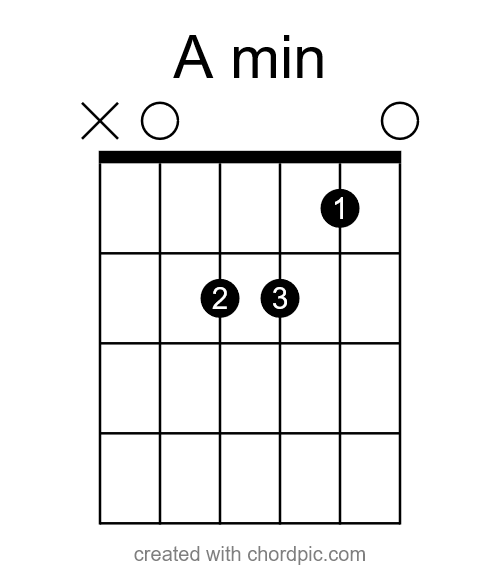
Barre Chords
Much like the minor triad shapes I showed you before, these minor barre chord shapes can be played on any root note – meaning you can move these shapes up and down the neck.
Root On 6
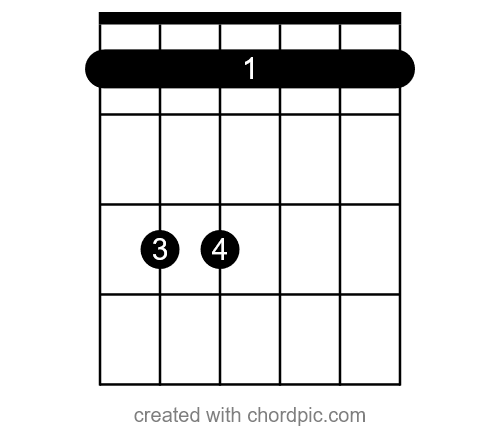
Root On 5
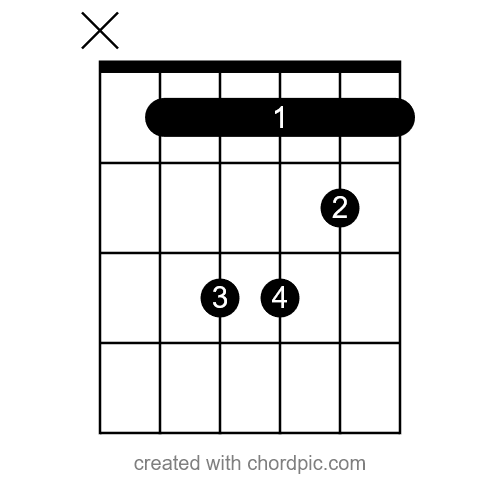
Inversions
A chord inversion is any chord voicing where the bass (or lowest note) is not the root of the chord. All triads have 3 possible inversions that they can be played in. They are: root position, 1st inversion, and 2nd inversion.
Up until this point we have only gone over root position minor chords, meaning the lowest note played is the root of the chord. However the lowest note doesn’t always have to be the root.
For example, if you played the notes C A E, this chord would still be considered an A minor chord. But to be more specific, it would be called an A minor chord in 1st inversion.
The following diagrams present how to play all the minor shapes and their inversions across all string sets.
String 6
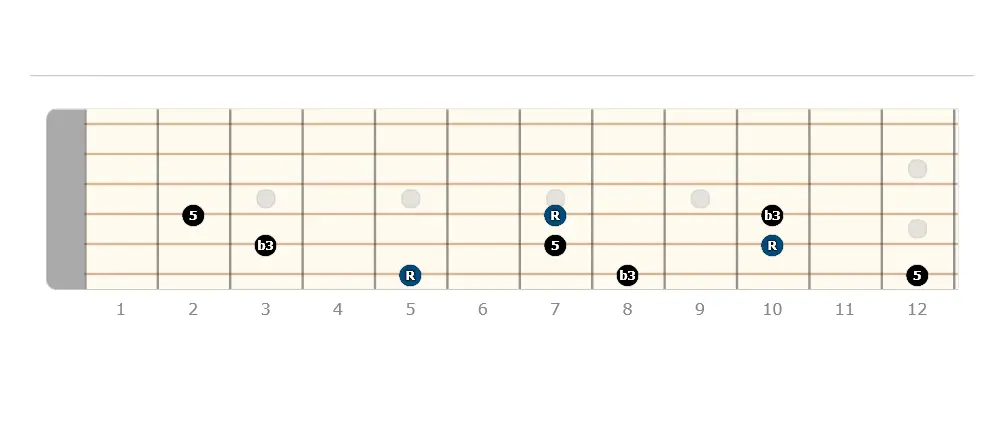
String 5
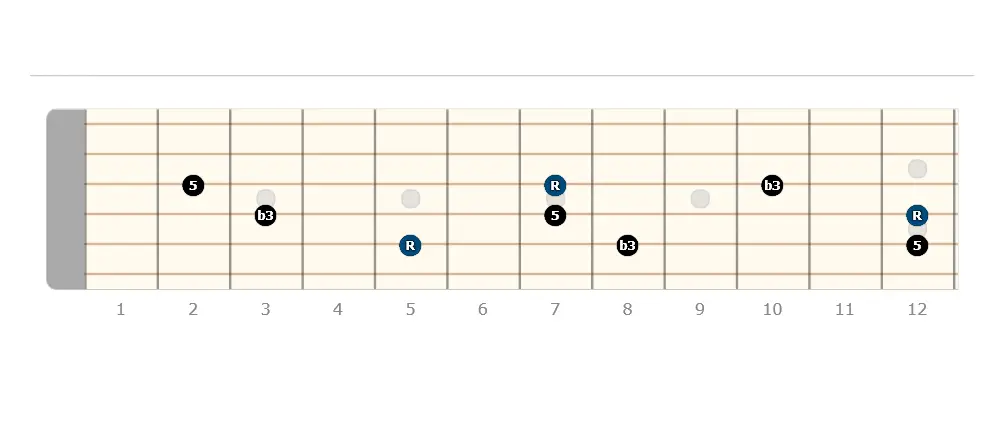
String 4
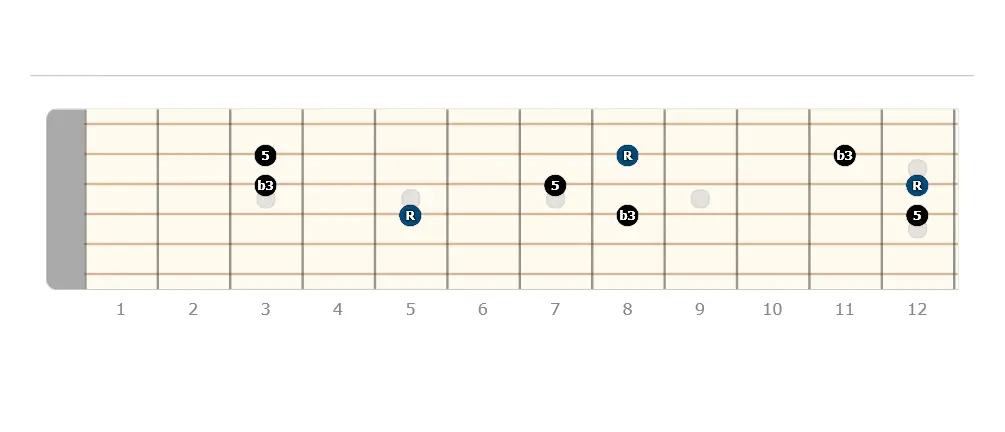
String 3
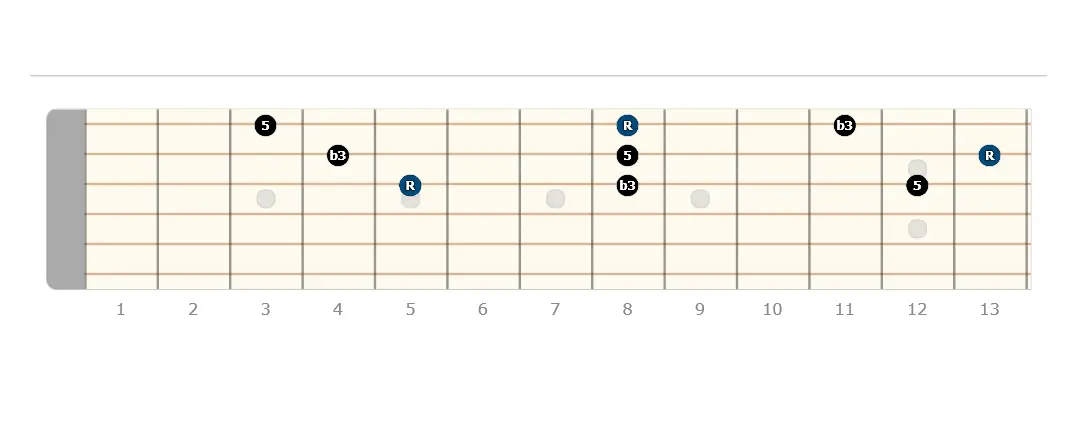
Applying Minor Chords In Music
As said before, the minor chord is often described as sounding sad, in major keys a minor chord can add contrast to make a song more interesting. In minor keys it is a reminder of the tonal center of a progression, providing a somber sense of stability and familiarity.
In a major key, using minor chords may have a predominant function, meaning they come right before the V7 chord. As in the ii V7 I and vi V7 I progressions.
Whether you know it or not, our ears have been trained to hear western tonal harmony because of popular songs we heard on the radio growing up. We expect to hear certain progressions, even if we aren’t trained in music theory. Many musicians use this to their advantage by replacing major chords with minor chords to subvert the listener and keep them engaged. Next time you play a song in a major key, try replacing a major IV with a minor iv.
Minor Chord Progressions
A chord progression is a “group of multiple chords played in a specific order to evoke a certain feeling or mood.”
In a minor key, the diatonic chords are:
i ii° III iv v VI VII i
In minor keys, it is not uncommon to exchange a minor v for a major V or V7 so be aware of that! Many songwriters simply pick based on which chord suits their current mood, so there are no strict rules on this!
For the sake of simplicity, I will be sharing some simple chord progressions in the key of a minor, however, feel free to challenge yourself to transpose these into any minor key you would like!
i iv v i
A min – D min – E min – A min
i ii° v i
(Jazz progression)
A min – B° – E min – A min
i VI VII
A min – F Maj – G Maj
i iv i VI V7 i
A min – D min – A min – F Maj – E Maj7 – A min
i – VII – VI – VII – i
A min – G Maj – F Maj – G Maj – A min
Practical Tips For Learning And Understanding Minor Chords
The first tip I would give someone to really understand minor chords is learning how they sound so well that they can point them out when they hear them. Working on your listening and ear training skills is beneficial to playing by ear.
Second, it can be quite easy for us to neglect working in minor keys, but they offer a unique sound to our music and shouldn’t be skipped! Adding minor scales to your warmup routine can help you grow accustomed to working in minor keys.
Remembering to play your natural, harmonic and melodic minor scales can help you with the added accidentals that may come along with minor keys.
Frequently Asked Questions
How do you distinguish between major and minor chords?
The difference between a major and a minor chord is a simple one note difference. In a major chord, the notes are root, 3rd, 5th. By lowering the 3rd, we get a flat 3rd.
The quality of the 3rd note is what distinguishes the happy sound of a major chord from the melancholy minor chord.
This is why the 3rd is the second most important note in a chord, after of course, the root.
Is A minor the same as C major?
When 2 keys share the same key signature, we call them relatives. A minor is the relative minor of C major. That means that not only do both keys use the same notes, but also the same chords. The only difference is the tonal center, meaning the tonic of one is A minor, and the tonic of the other is C major.
Why is it called a diminished chord?
Diminishing means to make smaller.
A diminished chord gets its name from the diminished 5th interval. The intervals of a diminished triad are root, b3, °5.
If it helps you to understand better, you can think about it like a “minor-minor” triad. (I made that up, so don’t quote me.)
Its intervals are made even smaller, meaning the notes played are closer together.
The diminished chord has a striking and abrasive sound and should only be used in specialized contexts.
Is minor a sad chord?
Yes, i cri evrytiem
What are the three types of minor chords?
Minor chords are just minor chords. However you may be confused with the 3 types of minor scales. The 3 types of minor scales are natural, harmonic, and melodic. We talk more about this in our article: The Minor Scale On Guitar
What is a 2 note chord called?
Most chords have at least 3 notes, however 2 notes played simultaneously may be considered a chord by some. Power chords, for example, are a chord notorious for only having 2 chord tones. I can’t tell if it is major or minor! They only have the root and 5th!
What is the formula for a minor scale?
The formula for a minor scale is W-H-W-W-H-W-W.
What is the easiest minor chord?
A minor and E minor open position chords are some of the easiest and most common chords used in guitar music. Their chord charts are listed above, if you want to learn more easy minor chords, see our article: Easiest Minor Chords On Guitar
